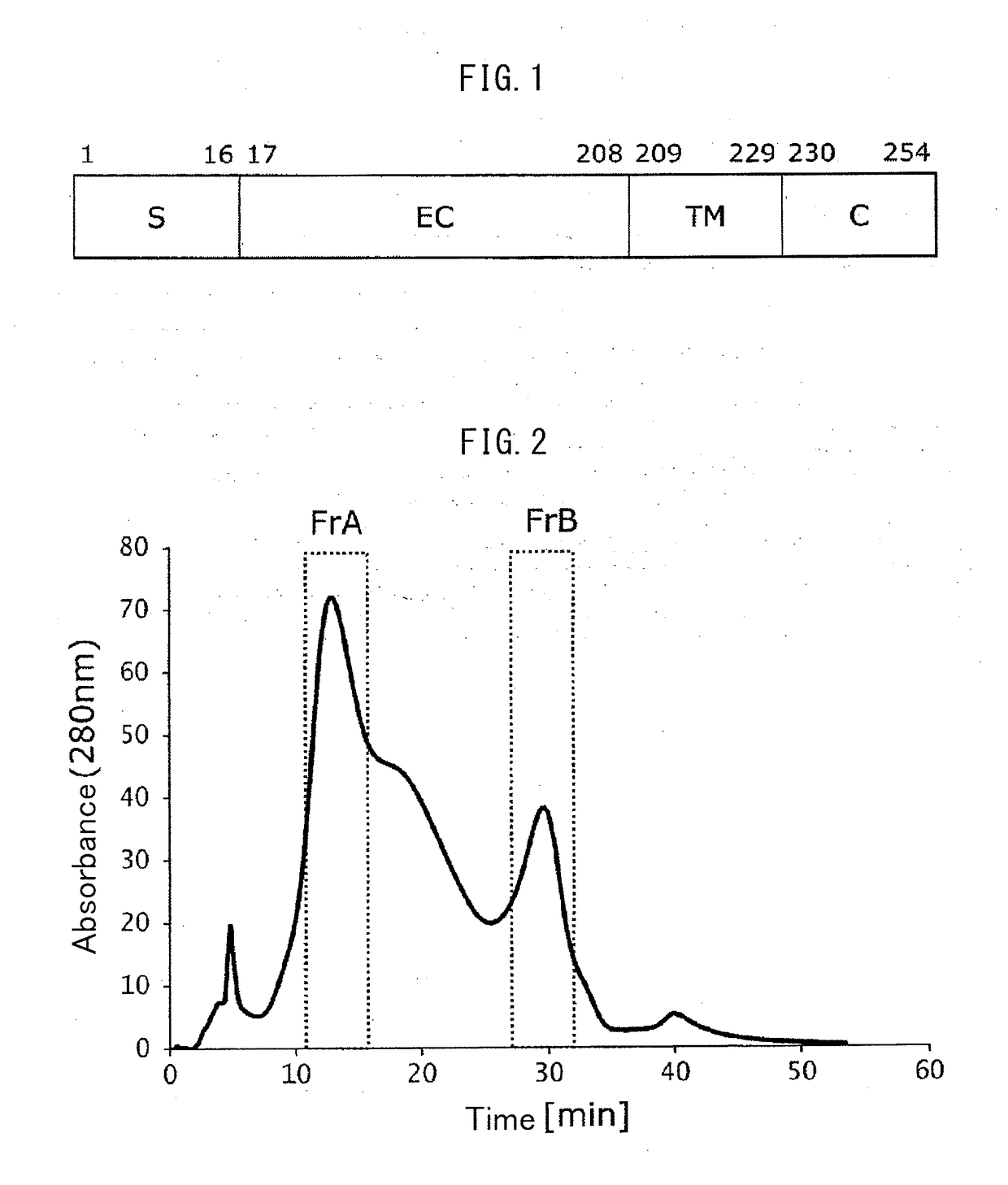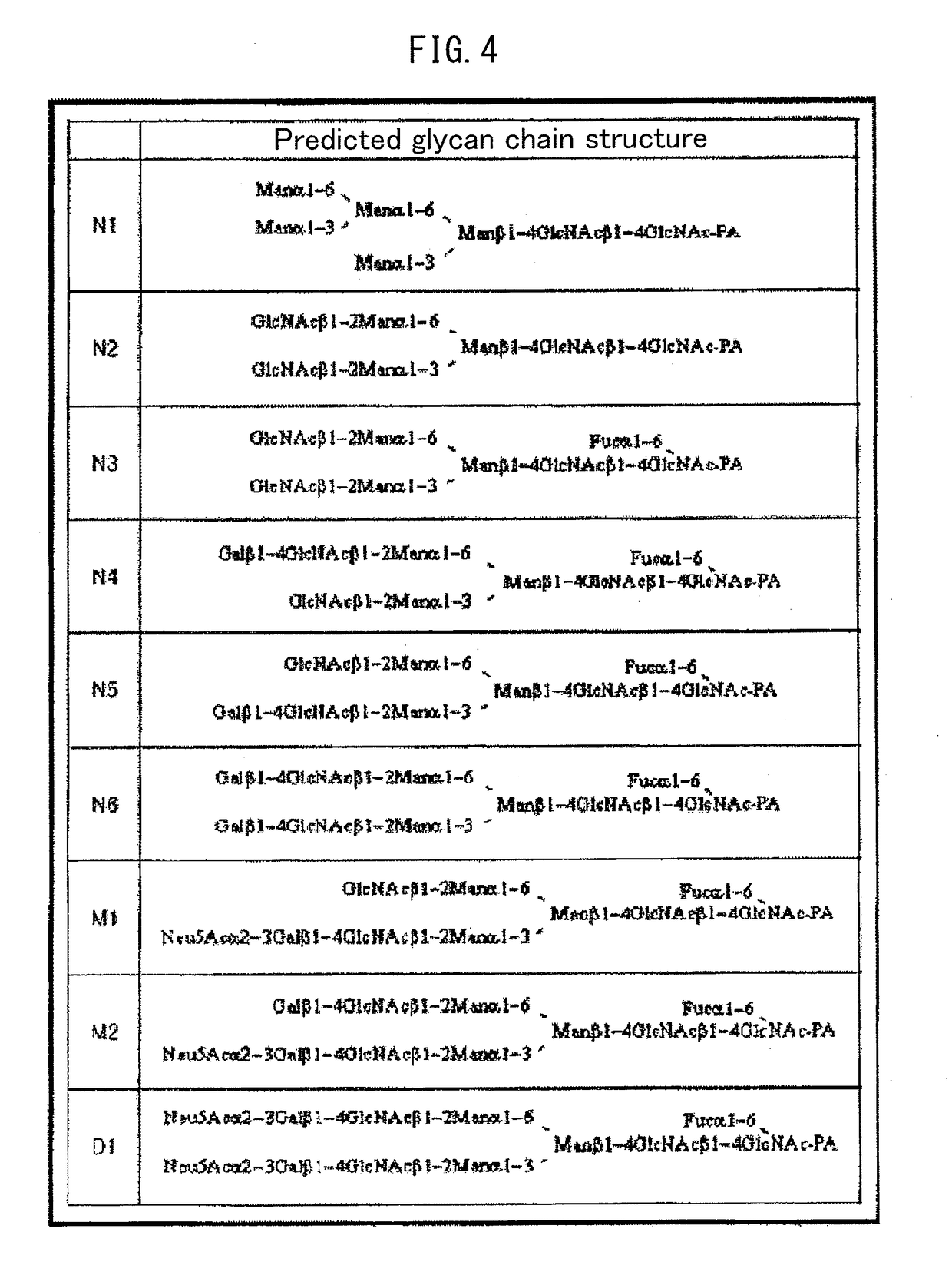Improved fc-binding protein, method for producing said protein, antibody adsorbent using said protein, and method for separating antibody using said adsorbent
- Summary
- Abstract
- Description
- Claims
- Application Information
AI Technical Summary
Benefits of technology
Problems solved by technology
Method used
Image
Examples
example 1
Construction of Fc-Binding Protein Expression Vector
[0192](1) A nucleotide sequence in which the codons were converted from human codons to Escherichia coli codons was designed using the DNAworks Method (Nucleic Acids Res., 30, e43, 2002) based on the amino acid sequence from glycine (Gly) at position 17 to glutamine (Gln) at position 192 of the amino acid sequence of human FcγRIIIa according to SEQ ID NO: 1. The designed nucleotide sequence is shown in SEQ ID NO: 2.
[0193](2) In order to construct a polynucleotide containing the sequence according to SEQ ID NO: 2, an oligonucleotide composed of the sequences according to SEQ ID NO: 3 to SEQ ID NO: 20 was synthesized, and the two-step PCR indicated below was carried out using the aforementioned oligonucleotide.
[0194](2-1) In the first stage of PCR, a reaction solution having the composition shown in Table 1 was prepared, and after subjecting the reaction solution to heat treatment for 5 minutes at 98° C., a reaction, in which 1 cycle...
example 2
Introduction of Mutation Into Fc-Binding Protein and Construction of Library
[0200]A mutation was randomly introduced into the polynucleotide moiety encoding Fc-binding protein present in the Fc-binding protein expression vector pET-eFcR constructed in Example 1 by error-prone PCR.
[0201](1) Error-prone PCR was carried out using the pET-eFcR constructed in Example 1 as template. Error-prone PCR was carried out by preparing a reaction solution having the composition shown in Table 3 followed by subjecting the reaction solution to heat treatment for 2 minutes at 95° C., carrying out the reaction, in which 1 cycle consisted of a first step carried out for 30 seconds at 95° C., a second step carried out for 30 seconds at 60° C. and a third step carried out for 90 seconds at 72° C., for 35 cycles, and finally subjecting the reaction solution to heat treatment for 7 minutes at 72° C. A mutation was favorably introduced into a polynucleotide encoding Fc-binding protein by the aforementioned ...
example 3
Screening of Heat-Stabilized Fc-Binding Protein
[0204](1) The random mutant library (of transformants) produced in Example 2 was inoculated into 200 μL of 2YT liquid medium (peptone: 16 g / L, yeast extract: 10 g / L, sodium chloride: 5 g / L) containing 50 μg / mL of kanamycin followed by shake culturing overnight at 30° C. using a 96-well deep well plate.
[0205](2) After culturing, 5 μL of the culture broth were subcultured in 500 μL of 2YT liquid medium containing 0.05 mM isopropyl-β-D-thiogalactopyranoside (IPTG), 0.3% glycine and 50 μg / mL of kanamycin, followed by additionally shake culturing overnight at 20° C. using a 96-well deep well plate.
[0206](3) After culturing, the resulting culture supernatant obtained by centrifugation was diluted two-fold with 20 mM Tris-HCl buffer (pH 7.4) containing 150 mM sodium chloride. The diluted solution was subjected to heat treatment for 10 minutes at 45° C.
[0207](4) The antibody binding activity of the Fc-binding protein when subjected to the heat ...
PUM
| Property | Measurement | Unit |
|---|---|---|
| Molar density | aaaaa | aaaaa |
| Structure | aaaaa | aaaaa |
| Cytotoxicity | aaaaa | aaaaa |
Abstract
Description
Claims
Application Information
 Login to View More
Login to View More - R&D
- Intellectual Property
- Life Sciences
- Materials
- Tech Scout
- Unparalleled Data Quality
- Higher Quality Content
- 60% Fewer Hallucinations
Browse by: Latest US Patents, China's latest patents, Technical Efficacy Thesaurus, Application Domain, Technology Topic, Popular Technical Reports.
© 2025 PatSnap. All rights reserved.Legal|Privacy policy|Modern Slavery Act Transparency Statement|Sitemap|About US| Contact US: help@patsnap.com



